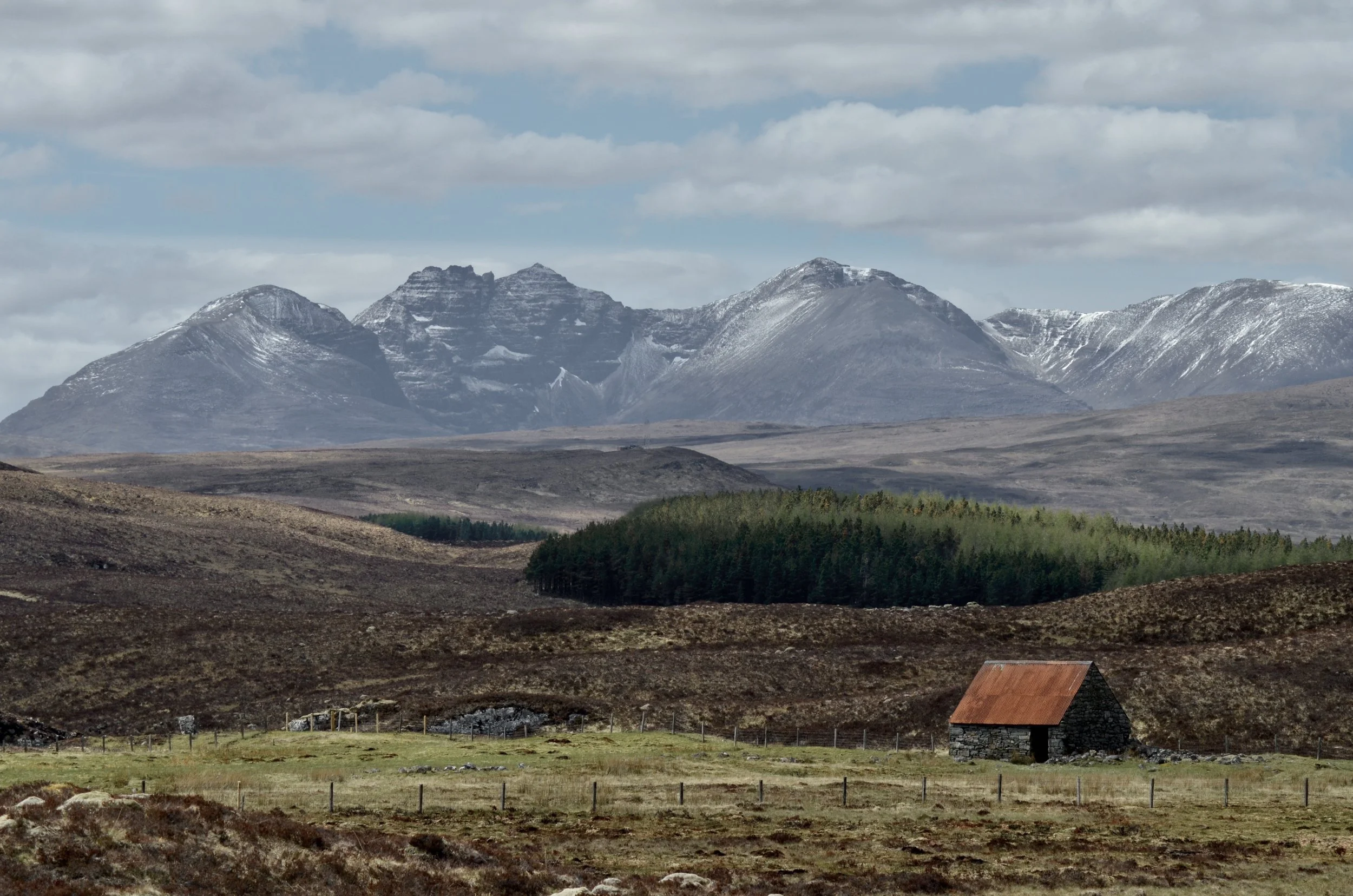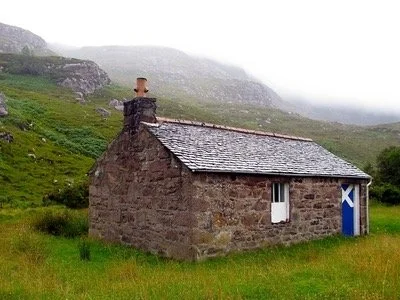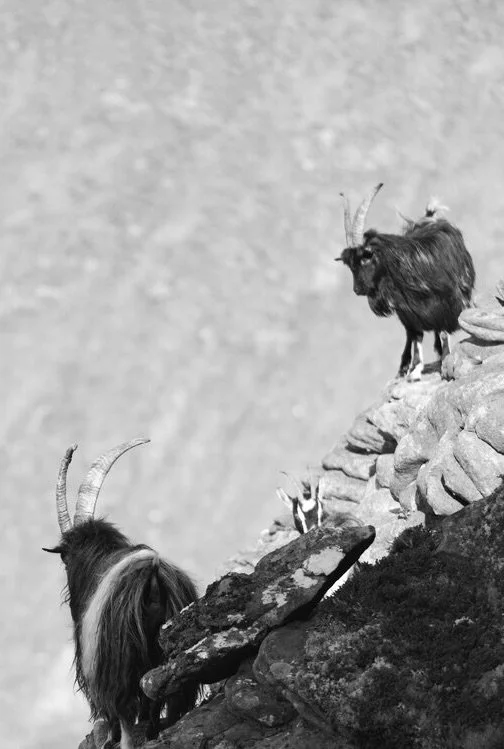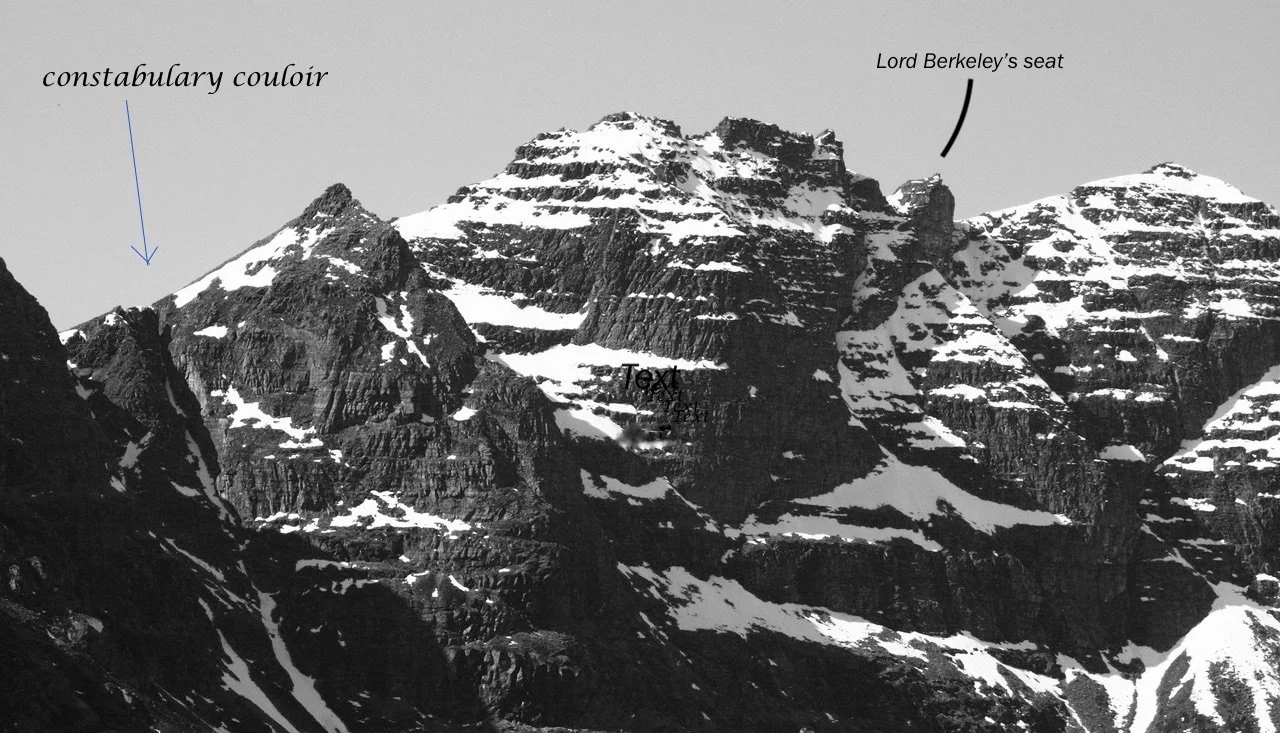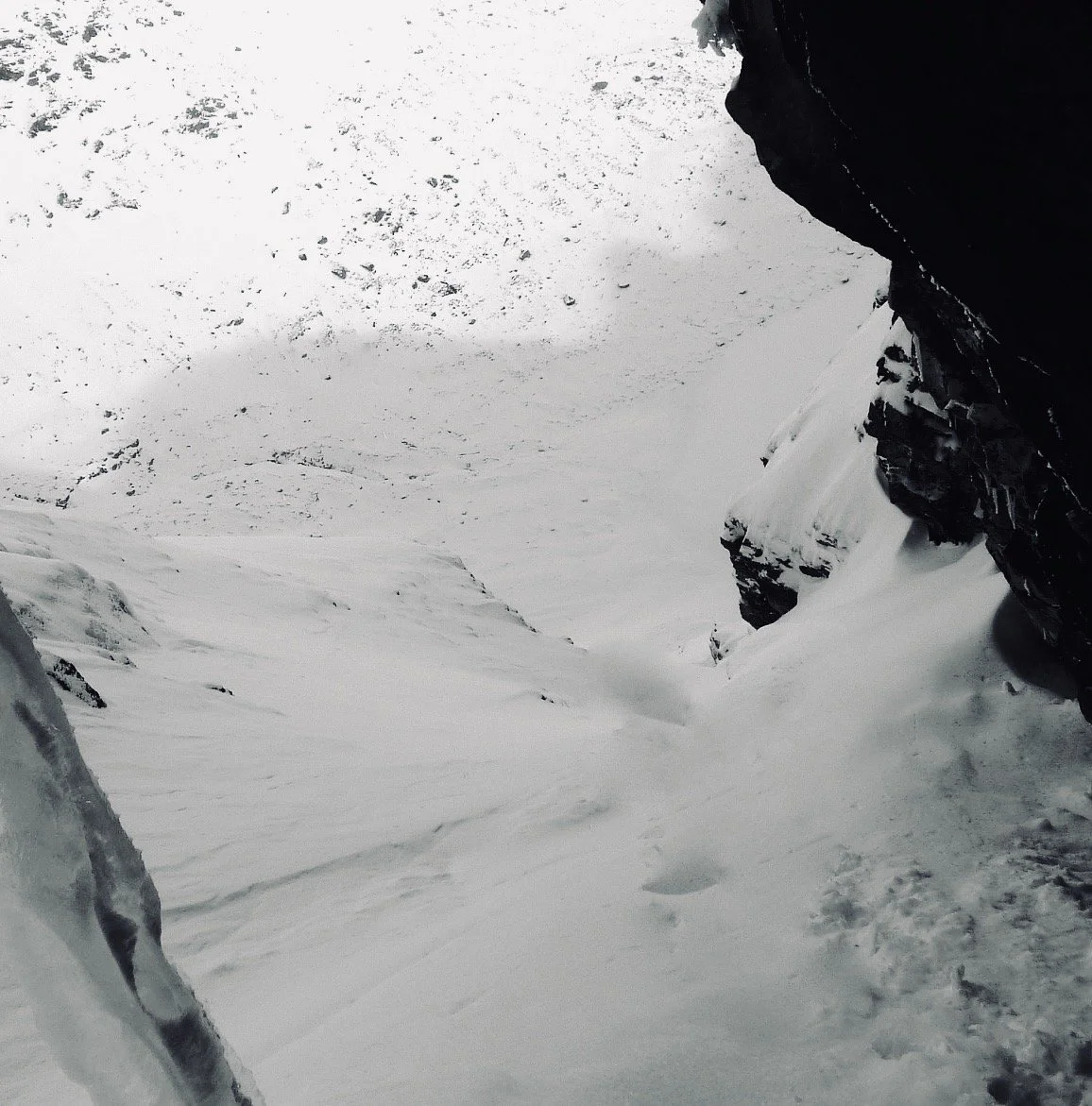An Teallach ( The Forge)
an teallach
The date is 4 July 1984 and I am on a family holiday at Tournaig Farm cottage, north of Poolewe in Wester Ross, Scotland. Stuart is 11 years old - Dougie is 8 years old and Alli is just short of his 5th birthday.
It starts out a ‘reasonable’ July day, dry, overcast - cloud ceiling about 3,000 feet with blue openings.
I set out early and take Stuart to climb An Teallach. The plan is to traverse round the whole ridge - taking in my twentieth and twenty-first Munros. I think Stuart might have been up Ben Lomond by then, not sure
The traverse of An Teallach is a big outing, not to be taken lightly.
After an uneventful drive round to Dundonnell, we park beside the Smiddy. A bothy, belonging to the Edinburgh Junior Scottish Mountaineering club, unmistakeable with its large saltire painted atop the strikingly blue door.
the smiddy, dundonnell, image property of the
Edinburgh junior mountaineering club
The path curves round behind the Smiddy and snakes up through the heather, zig zagging a bit as it rises through some crags onto the east shoulder of Meall Garbh. We soon leave the path and drop down to our left to follow Allt a’Mhuilinn and pass its waterfalls. It is pathless at this point, resulting in a bit of leg dragging as we meander through heather.
We push on into Coire a’Mhuilinn ascending to about the 600 metres where swing left up the steep northern flank of Glas Mheall Mor. It is a bit of a grind, but good to be out of the knee deep vegetation as we make our way up through a ‘dinner plate’ constructed slope. Well, sandstone slabs.
We sit down on one of the ‘dinner plate’ columns for a break and some sustenance, a bit short of the ridge, maybe about 900 metres, and take in our spectacular surroundings. Then we hear stones being dislodged, faintly at first then getting louder. We were a tad puzzled and thought some other traveller was following our unconventional route.
Then we saw them, a family of wild goats, seven of them, complete with kids, passing no more than thirty feet or so below our position, seemingly oblivious to our presence, their hooves on the sandstone and the occasional skitter of dislodged loose rocks being the only sound as they calmly meandered along and out of our sight round a bulge to our right.
wild goats on an teallach - picture given to me by a photographer on the Stornaway ferry a few years ago
We then scrambled up the last hundred feet or so and onto the ridge apex where we are stopped in our tracks by the breathtaking vista. Perhaps spectacular might describe it better. I did consider using ‘intimidating,’ but quickly discarded that thought, it was not intimidating, it was exhilarating and I could not wait to get my boots on it.
Our route descended along a narrow ridge with steep drops on either side, particularly into Glas Tholl corrie on our left (My limited Gaelic suggests The Grey Door?) with its awesome north facing flank of a thousand feet high vertical cliffs.
As we continued our short descent we could not take our eyes off the steep ascent route, a narrow north facing ridge, that we are about to encounter, leading to the high point of our day, Bidean a’ Ghlas Thuill at 1062 metres (The peak of the Greenish Grey hollow). Then we are there, sitting on the summit like eagles on an eyrie. If we thought the view from Glas Mheall Mor was ‘spectacular’ we had not experienced this vantage point. I would say nothing short of ‘breathtaking,’ but I am not sure that does it justice.
I have since climbed every Munro and I am happy to be challenged on my opinion, but to me this summit, perched more than a thousand feet over Loch Toll an Lochain, with its ring of more than a thousand foot high craggy cliffs is one of the most formidable, inspiring locations in Scotland.
After another food stop we drag our eyes from the view and head on to tackle the second Munro of this spectacular place, Sgurr Fiona (peak of wine?). This is perhaps the more impressive of the two An Teallach Munro’s, a perfect rock pyramid and the gateway to the trickiest part of the exposed and exciting ridge. It is our intention to stick to the actual high route, ignoring any by pass route.
We continue to scramble on the edge with huge falls to our left, then we reach the next challenge, Lord Berkley’s Seat.
An Teallach’s knife edge ridge with the areas written about in my text indicated
The story of the name relates to an MP from the mid 1800’s, George Fitzhardinge Berkeley, an ‘interesting’ character by all accounts who, it is said, for a bet, sat astride the outcrop that now carries his name. It is suggested by some that said outcrop should properly be called, ‘Stony Seat’. Who knows? Whatever the merits of either ‘moniker,’ I am happy to say I stood out on the edge, as did Stuart.
Yes, we did and yes, I did find it a tad intimidating. It seemed my 11 year old son took it in his stride. I edged out till my toes were on the edge and I looked down to the Lochan and thought, ‘now this is the highest diving board I have ever stood on.’ The problem was that this was no ordinary diving board; I had no intention of diving from it to the distant water below, nor as I found out, could I turn and walk back from the edge. The act of turning made me feel I would loose my balance. So I had to carefully, very carefully, shuffle back till I had created enough space and distance from the edge to allow me to turn.
Then on we pressed, loving every foot of the exhilarating day.
Corrag Buidhe was the next challenge, another airy place. For some reason I got to calling it the Corrag Buttress. I assume I heard it called that. Whatever it is called, it is still a fearsome part of the ridge. By the time Stuart and I were on it, the day was passing and I thought we had better get a move on. I got Stuart to sit atop it and, NOT move. Meanwhile I explored down a bulge that protruded out toward the Lochan No descent route that way. I scrambled back up and continued on towards Sail Liath.
I considered going over Sail Liath and down by Lochan na Bràthan then follow the track down Gleann Chaorachain that leads to Corrie Hallie and the Gairloch Road.
However, just before Sail Liath, on my left I spy an obvious gulley leading down to Loch Toll an Lochain. It looked particularly steep, but manageable and giving us a quicker exit and an easier walk back to the car at Dundonnell via Coir a’ Ghiubhsachain. Another consideration was tiredness. We were starting to feel a bit ‘bushed’ and the thought of dragging ourselves over another peak was less than inviting. Hence the ‘bail out’.
I find out later that our descent gulley is called Constabulary Couloir, a regular winter ascent route.
a winter view of Constabulary Couloir - not quite the view or conditions we descended in - image sent to me by a member of Dundonnell Mountain Rescue Team
We head on down and soon find a few awkward snow patches ‘clogging’ some of the narrow sections. I get Stuart to wait at these parts until I secure myself a few feet below him. He then carefully picks his way to my position. We repeat that manoeuvre every time we encountered the snow patches. Then we are on the last ‘run out’ and beside the Lochan.
Earlier I had enthused about the spectacular views from the ridge. I will now say that, in my humble opinion, standing beside Loch Toll an Lochain and looking up and round at that semi circle of thousand foot high cliffs, has to be ‘up there’ when awesome views are being considered.
But it was more than that, it was humbling and when I took it all in I realised how small and insignificant I am, we are, when pitched into the wonders of nature and the sobering fact that what I was observing was hundreds of million years old and in fact had not always been in this spot, having worked its way to this position from south of the equator.
I soon brought things back to mundane reality as I stripped off my sweaty gear, every stitch of it, much to Stuart’s shock as he asked, ‘dad, what are you doing?’ Too late, by the time he had completed his utterance, I was deep in the Lochan.
Not for long as it turned out. My hot sweaty body so rudely plunged into the icy waters nearly resulted in stopping my heart. I exited like a blue whale exploding from the deep. Well, perhaps not quite so spectacularly. A quick rub down with my sweaty vest and off we set.
The walk back was made easier, not only because the way was marked by regular cairns but also because much of it was over easy walking slabs. We pass the same waterfalls on Allt a’Mhuilinn that we had viewed that morning. Our route was also blessed by meadow pipits and we came across a nest with four beautiful eggs.
Then it was a refreshment at the Dundonnell hotel at the hands of Selby and Flora, wonderful people and hosts.
The run back to Tournaig was completed with the lowering sun lighting our way.
All in all a wonderful, if tiring experience.
